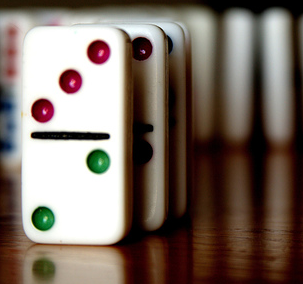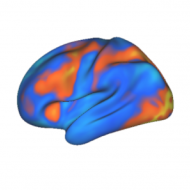Topic 6: Causal Understanding
 Causal understanding is an important part of human cognition. How do we understand that a particular event or force has caused another event? How do realize that inserting coins into a soda machine results in a cool beverage appearing below? And ultimately, how do we understand people’s reactions to events?
Causal understanding is an important part of human cognition. How do we understand that a particular event or force has caused another event? How do realize that inserting coins into a soda machine results in a cool beverage appearing below? And ultimately, how do we understand people’s reactions to events?
The NSF workshop panel on the Grand Challenges of Mind and Brain highlighted the question of ‘causal understanding’ as their 6th research topic. (This was the final topic in their report.)
In addition to studying causal understanding, it is probably just as important to study causal misunderstanding: that is, why do individuals infer the wrong causes for events? Or incorrect results from causes? Studying the errors we make in causal inference and understanding may help us discover the underlying neural mechanisms.
It probably isn’t too difficult to imagine that progress on causal understanding, and improvements in our ability to be correct about causation, will probably be important for the well-being of humanity. But what kinds of experiments and methods could be used to human brain mechanisms of causal understanding?
cialis 20mg
Generisk CIALIS
online sverige
erektil dysfunktion
tadalafil 20mg
cialis online
cialisse.top
cheap viagra
generic viagra
sildenafil online
viagra uk
sildenafil uk
buy viagra online
viagra online
sildenafil citrate 100mg
women viagra
viagra reviews
viagra online
genericviagrauk.top
Experiments?
The NSF report asks how “sophisticated computational frameworks for causal reasoning and learning can be mapped onto — and perhaps enriched by — models of neural computation.” Human experiments aimed at studying causal understanding would probably need to introduce situations in which participants could be mistaken about the cause for a particular event.
In addition, human experiments could study cases in which some individuals develop causal understanding, whereas others don’t. Through scientific study, the underlying neural bases for these individual differences could perhaps be discovered.
Can one determine causal understanding through purely behavioral (non-linguistic) experiments? Let’s consider how we might determine whether an agent (i.e., human or artificial) has obtained a causal understanding of a situation in which A causes B. If an agent ‘understands’ that A causes B and wants B to occur, the act of performing A (more frequently than other actions) might indicate some form of understanding. However, critics might say that the agent was merely being ‘superstitious’ by performing A without a real understanding that A causes B.
It seems that using purely behavioral methods would be inconclusive. Using neuroscience methods, perhaps we can look “under the hood” to get at whether an agent has formed true causal understanding. We can then ask, “What happens the first time two different agents observe that B does not actually follow A?” Our hypothesis would be that different forms of understanding, say correlational and causal, would involve different brain mechanisms.
Suppose that Agent #1 has no causal understanding but has noted the correlative fact that A is always followed by B. Suppose that Agent #2, on the other hand, has a developed a true ‘understanding’ that A always causes B. Both Agents #1 and #2 will be ‘surprised’ the first time that B doesn’t follow A. But the nature of their surprise should be different.
Agent #1’s would, perhaps, have to revise its model correlating A and B from 1.00 to 0.99. Agent #2 would have to hypothesize a separate cause that interfered with the expected result event. As suggested above, a working hypothesis would be that these two types of learning involve different resources in the brain.
-PL
(Domino image from Tim Cummins’ flickr photostream, under Creative Commons.)
